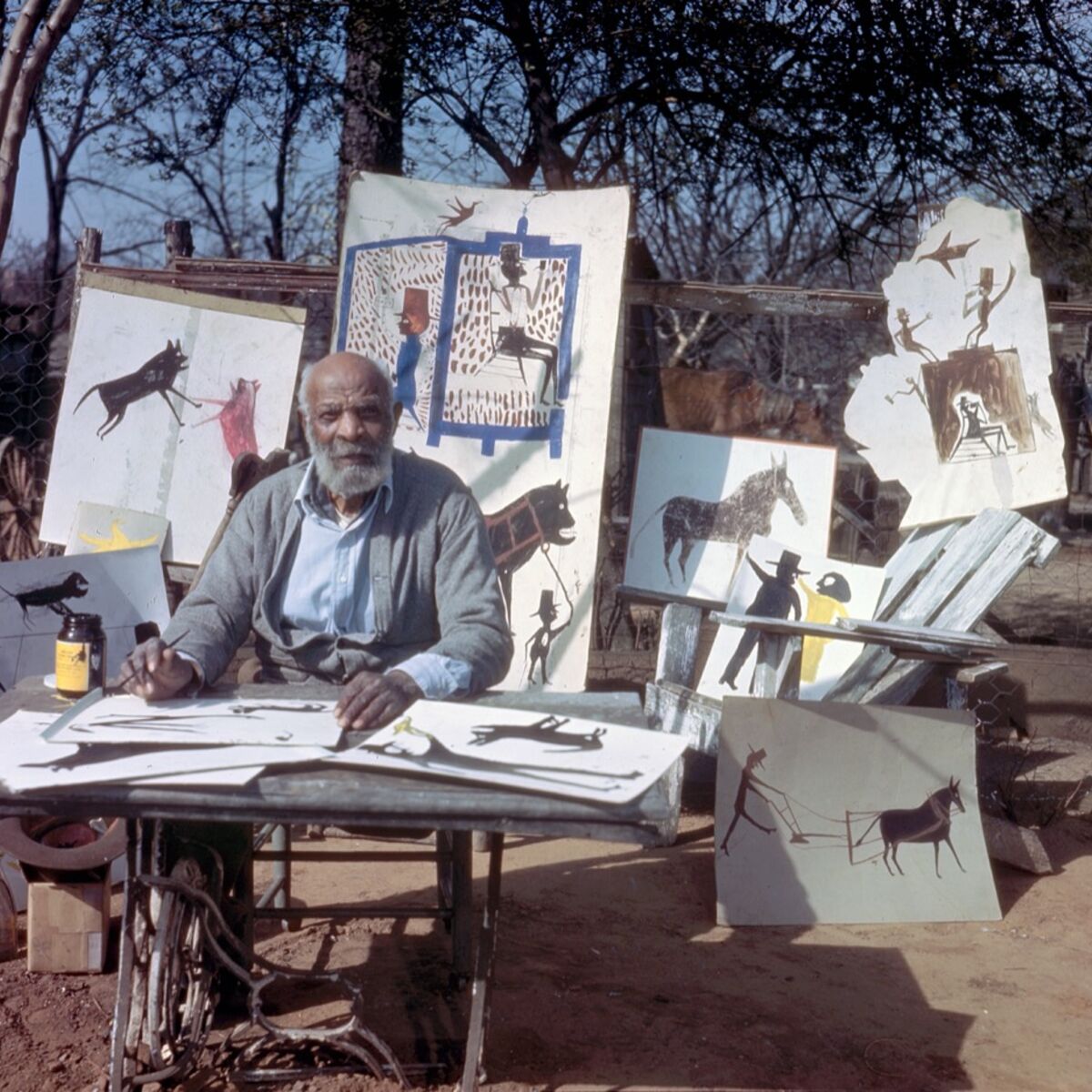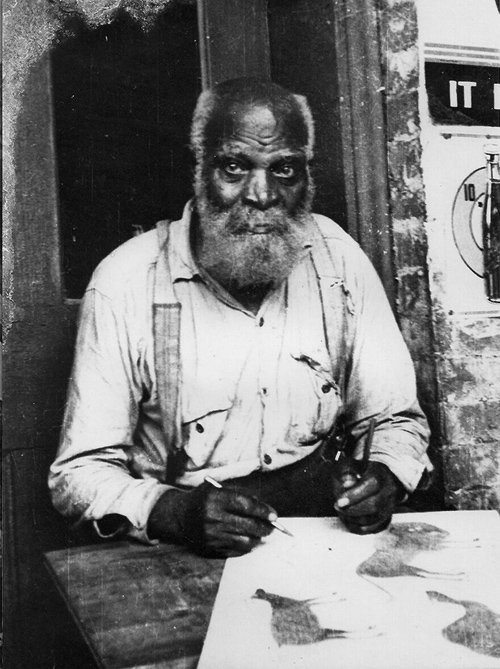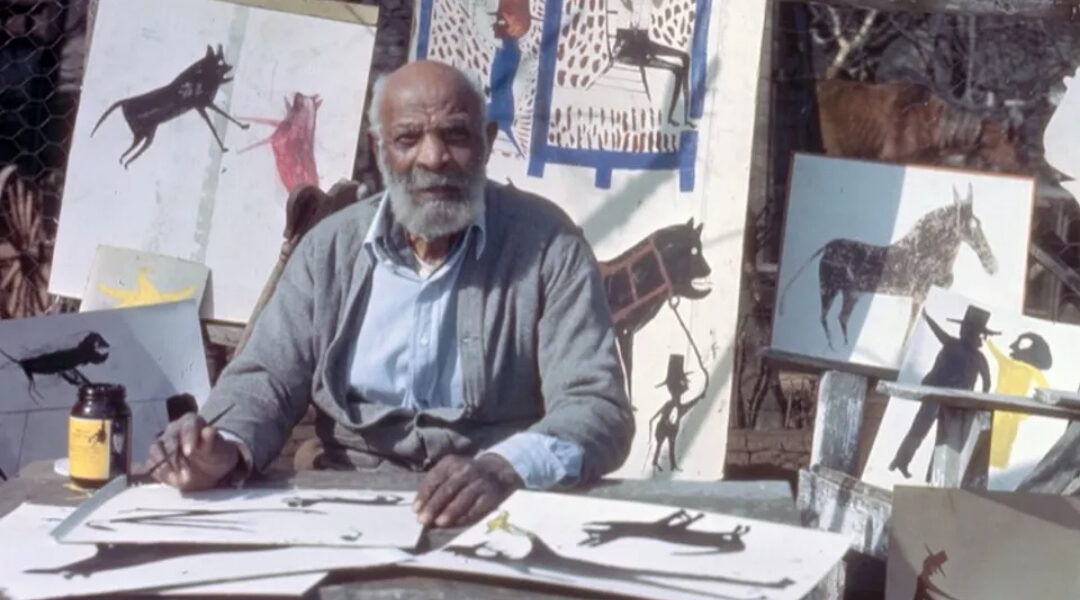He was born into a world that refused to see him.

Around 1853, on an Alabama plantation, an infant named Bill Traylor entered life not as a child, not as a citizen, not as a future artist — but as property. His earliest memories were not of toys, books, or bright colors, but of fields, heat, orders barked across dusty earth, and the endless weight of forced labor. Childhood, as most people understand it, was never something he tasted.
Yet even then, even in the harshest beginnings, Bill Traylor was watching.
Quietly.
Carefully.
Absorbing everything.
The way animals moved.
The quick arguments between workers.
The silhouettes of wagons, dogs, men with hats, children running through dirt roads.
Lines. Shapes. Colors. Stories.
He didn’t know it then, but the world he saw — the world that tried to break him — would one day become his canvas.

Freedom came, but not ease.
After emancipation, Bill continued working on plantations as a sharecropper. The system was new only in name; the cycle of poverty and hardship remained painfully familiar. Still, he lived with a quiet resilience. He raised a family. He worked the land. He survived loss after loss. He saw children grow, saw friends pass, saw the world change while his own remained anchored in the same Alabama soil.
Decade after decade rolled on.
And through it all…
he continued watching.
In 1939, when most men his age were settling into stillness, Bill’s life took an unexpected turn.
He was about 85 years old, homeless, and no longer able to farm. He moved to Montgomery, Alabama, sleeping in back rooms, working odd jobs, and sitting for long hours on a sidewalk near Monroe Street.
People passed him every day without a second glance — an old Black man in worn clothes, leaning on a cane, resting beneath the scorching southern sun.
But inside him, something was shifting.
All those years of observing life — the movement, the gestures, the loudness, the quietness — began pressing against his chest with urgency.
One day, with nothing more than a stub of a pencil and a piece of discarded cardboard, Bill Traylor made a decision that would change American art forever:
He began to draw.
He drew the things he remembered.
He drew the things he saw.
He drew his world — raw, unfiltered, and honest.
People fighting.
Horses kicking.
Men dancing.
Dogs leaping.
Figures bending, running, shouting, loving, struggling.
Bold lines.
Sharp silhouettes.
Vibrant colors when he could find them.
Simplified shapes bursting with life.
Every stroke was memory.
Every picture was testimony.
Every drawing was a voice from a man who had not been allowed one for most of his life.
He drew on any scrap he could find — cardboard, paper bags, cast-off poster board, the backs of advertisements. Nothing was too humble for his imagination.
By the time he was done, he had created more than 1,000 artworks.
A thousand pieces of a world that had almost erased him — now preserved in color and line.
At first, no one understood what Bill was doing.
Passersby saw only an old man scribbling in the street. Some laughed. Some ignored him. A few, curious, stopped and watched. But only one man, a young artist named Charles Shannon, recognized the brilliance in front of him.
He began saving Bill’s drawings, documenting his work, encouraging him. Slowly, carefully, he helped preserve the legacy Bill himself never imagined would matter.
Because Bill Traylor wasn’t drawing for fame.
He wasn’t drawing for galleries.
He wasn’t drawing for recognition.
He was drawing because the stories inside him demanded to live.
And he kept drawing — through pain, through exhaustion, through poverty. As long as his hands could move, he created.
He died in 1949, quietly, without ever knowing what he had left behind.

Only after his death did the world begin to catch up to him.
Artists, historians, and curators started noticing something extraordinary in his work:
purity, power, genius.
His drawings were not just art —
they were history.
They were memory.
They were the visual language of a man who had lived on both sides of America’s greatest wound.
His work began appearing in galleries.
Then museums.
Then major exhibitions.
And in 2018, decades after his final breath, the Smithsonian American Art Museum opened one of the most significant shows in its history:
“Between Worlds: The Art of Bill Traylor.”
People lined up to see the drawings created by a man who had begun life enslaved, who never attended school, who never took a single art class, who spent his last years drawing on the street… yet somehow became one of the most important self-taught artists in American history.
Visitors stared at his work with awe — at the sharp angles, the movement, the emotion bursting out of each piece.
They saw not just pictures, but truth.
Not just colors, but resilience.
Not just figures, but the echo of a life that refused to disappear.
Bill Traylor, once invisible, had become immortal.
His story is not just about art.
It’s about survival.
It’s about transformation.
It’s about a man denied every opportunity, who created his own anyway.
It’s about the beauty that can grow from pain, the creativity that can rise from silence, the brilliance that can come from someone the world overlooked.
It’s about an old man who sat on a street corner and turned scraps of trash into treasures.
It’s about a voice that took 85 years to speak — and now will never be forgotten.
Bill Traylor’s art reminds us of something profound:
Greatness doesn’t always come from privilege.
Sometimes it comes from perseverance.
From memory.
From struggle.
From a lifetime of watching the world — and finally choosing to show it through your own eyes.
And in every bold line, in every leaping figure, in every vivid shape…
You can feel him.
A man who once had nothing —
and left behind everything.




